查询oracle数据库所有用户的sqlplus命令是啥
Posted
tags:
篇首语:本文由小常识网(cha138.com)小编为大家整理,主要介绍了查询oracle数据库所有用户的sqlplus命令是啥相关的知识,希望对你有一定的参考价值。
命令是select * from dba_users,设置方法为:
1、在数据库的开始菜单中,输入cmd后回车,也就是调用Windows的命令行管理器。

2、在命令提示符处输入 select * from dba_users 然后按键盘回车键,注意,这中间都是有一个空格,否则会提示命令出错。
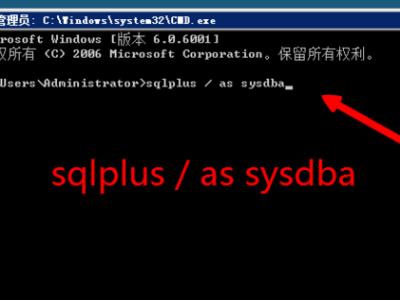
3、以上命令执行完成后,出现SQL的字样,表明成功连接到本机数据库了,可以进行相关SQL操作了。
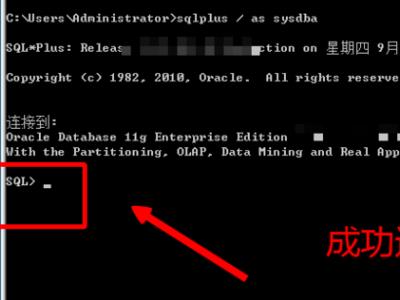
4、输入 select username from dba_users;后敲键盘回车键,进行数据库用户查询。

5、SQL命令执行完成后,会出现我们要查找的username也就是数据库用户名列表,这里有Oracle数据库自己的用户,也有按需求添加的用户。
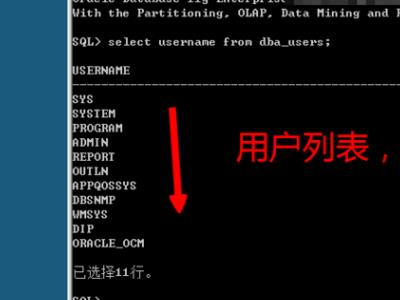
6、使用完成后,查询oracle数据库所有用户。
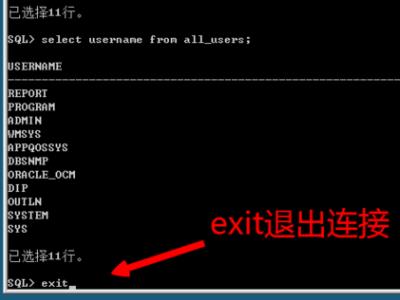
select * from dba_users; 查看数据库里面所有用户,前提是你是有dba权限的帐号,如sys,system;
select * from all_users; 查看你能管理的所有用户;
select * from user_users; 查看当前用户信息 。
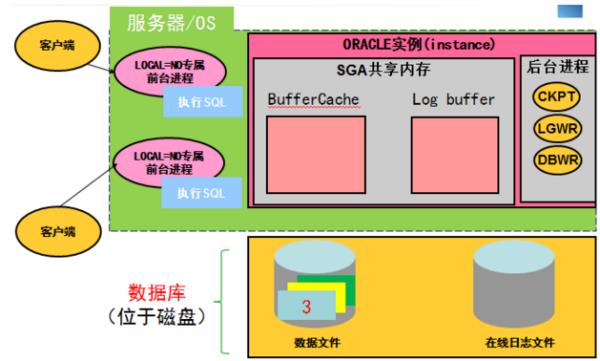
扩展资料
oracle 的用户管理 sqlplus的常用命令介绍:
1、创建用户:create user 用户名 identified by 密码;
SQL> create user scw identified by 123;
2、修改其他用户密码 需要权限;
SQL> conn system/123;
已连接。
SQL> alter user scw identified by 123;
3、赋予用户连接数据库的权限:
SQL>grant create session to zhansgan;
4、查看当前用户所有表的表名:
SQL> select table_name from user_tables;
前提条件是查询的用户必须有dba权限。可以用的语句是:
select * from all_users;sqlplus使用方法:
1、win键+R键,进入命令提示符:
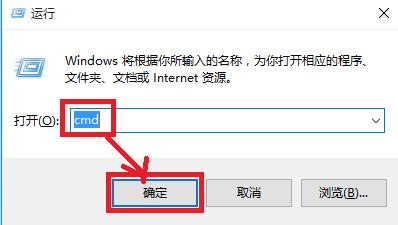
2、命令提示符中输入“sqlplus 用户名/密码@实例名”(不含引号):
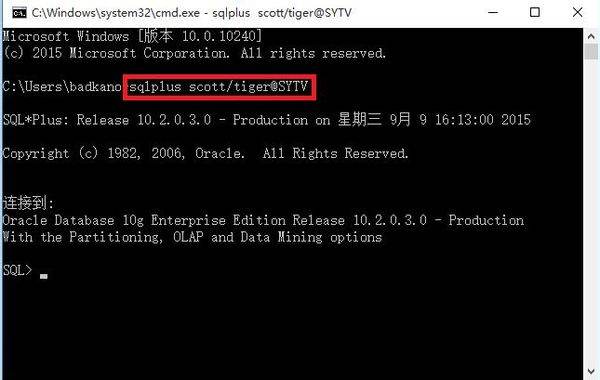
3、输入查询的语句,“select * from all_users;”(不含引号,但分号不能省略),然后按回车键,就会显示执行结果,如图:
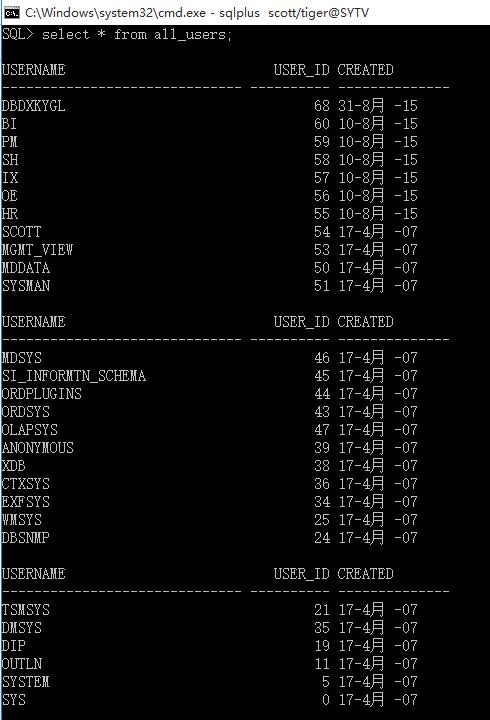
select * from all_users;本回答被提问者采纳 参考技术D show * from dba_users; show * from users;
Oracle的SQLPLUS常用命令
二、用户如何有效地利用数据字典
Oracle的数据字典是数据库的重要组成部分之一,它随着数据库的产生而产生, 随着数据库的变化而变化,体现为sys用户下的一些表和视图。数据字典名称是大写的英文字符。
数据字典里存有用户信息、用户的权限信息、所有数据对象信息、表的约束条件、统计分析数据库的视图等。
我们不能手工修改数据字典里的信息。
很多时候,一般的ORACLE用户不知道如何有效地利用它。
dictionary 全部数据字典表的名称和解释,它有一个同义词dict
dict_column 全部数据字典表里字段名称和解释
如果我们想查询跟索引有关的数据字典时,可以用下面这条SQL语句:
SQL>select * from dictionary where instr(comments,‘index‘)>0;
如果我们想知道user_indexes表各字段名称的详细含义,可以用下面这条SQL语句:
SQL>select column_name,comments from dict_columns where table_name=‘USER_INDEXES‘;
依此类推,就可以轻松知道数据字典的详细名称和解释,不用查看ORACLE的其它文档资料了。
下面按类别列出一些ORACLE用户常用数据字典的查询使用方法。
1、用户
查看当前用户的缺省表空间
SQL>select username,default_tablespace from
user_users;
查看当前用户的角色
SQL>select * from user_role_privs;
查看当前用户的系统权限和表级权限
SQL>select * from user_sys_privs;
SQL>select * from user_tab_privs;
2、表
查看用户下所有的表
SQL>select * from user_tables;
查看名称包含log字符的表
SQL>select object_name,object_id from user_objects
where instr(object_name,‘LOG‘)>0;
查看某表的创建时间
SQL>select object_name,created from user_objects
where object_name=upper(‘&table_name‘);
查看某表的大小
SQL>select sum(bytes)/(1024*1024) as
"size(M)" from user_segments
where segment_name=upper(‘&table_name‘);
查看放在ORACLE的内存区里的表
SQL>select table_name,cache from user_tables where
instr(cache,‘Y‘)>0;
3、索引
查看索引个数和类别
SQL>select index_name,index_type,table_name from
user_indexes order by table_name;
查看索引被索引的字段
SQL>select * from user_ind_columns where index_name=upper(‘&index_name‘);
查看索引的大小
SQL>select sum(bytes)/(1024*1024) as
"size(M)" from user_segments
where segment_name=upper(‘&index_name‘);
4、序列号
查看序列号,last_number是当前值
SQL>select * from user_sequences;
5、视图
查看视图的名称
SQL>select view_name from user_views;
查看创建视图的select语句
SQL>set view_name,text_length from user_views;
SQL>set long 2000; 说明:可以根据视图的text_length值设定set long 的大小
SQL>select text from user_views where
view_name=upper(‘&view_name‘);
6、同义词
查看同义词的名称
SQL>select * from user_synonyms;
7、约束条件
查看某表的约束条件
SQL>select constraint_name,
constraint_type,search_condition, r_constraint_name
from user_constraints where table_name =
upper(‘&table_name‘);
SQL>select
c.constraint_name,c.constraint_type,cc.column_name
from user_constraints c,user_cons_columns cc
where c.owner = upper(‘&table_owner‘) and
c.table_name = upper(‘&table_name‘)
and c.owner = cc.owner and c.constraint_name =
cc.constraint_name
order by cc.position;
8、存储函数和过程
查看函数和过程的状态
SQL>select object_name,status from user_objects
where object_type=‘FUNCTION‘;
SQL>select object_name,status from user_objects
where object_type=‘PROCEDURE‘;
查看函数和过程的源代码
SQL>select text from all_source where owner=user
and name=upper(‘&plsql_name‘);
以上是关于查询oracle数据库所有用户的sqlplus命令是啥的主要内容,如果未能解决你的问题,请参考以下文章